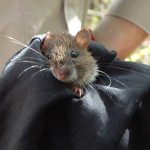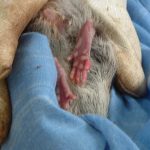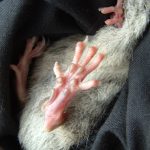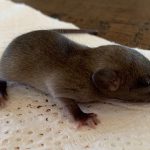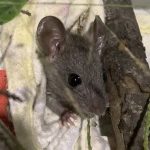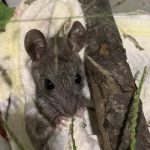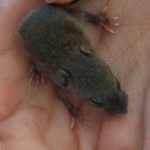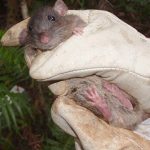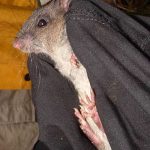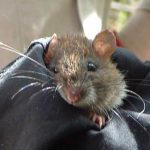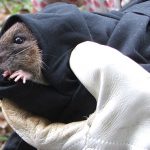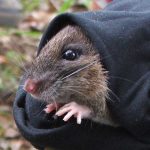BUSH RAT
The Bush rat is found in various habitats across Australia, including rainforests, woodlands, heathlands, and grasslands. It prefers areas with dense vegetation, often near water sources such as rivers, streams, and swamps.
Four subspecies are recognised, each occurring in different regions or habitat, these are
- Rattus fuscipes assimilis, common in the coastal region of the south and east of continent, Rockhampton, Queensland to Timboon in Victoria
- Rattus fuscipes coracius, north-east Queensland, Cooktown and Townsville, in rainforest at low or high altitudes
- Rattus fuscipes fuscipes, the nominate found in south-west Australia extends from Jurien Bay to Israelite Bay
- Rattus fuscipes greyii, southern subspecies found from Eyre Peninsula to west of Portland in Victoria
The Bush rat has a slender body with a tail that is usually shorter than its head and body combined. It has soft, dense fur, which can vary in color from grey-brown to reddish-brown, and its underbelly is typically lighter in color.
Bush rats are omnivorous and have a diverse diet. They feed on a variety of food items, including fruits, seeds, nuts, insects, small vertebrates, and carrion.
The Bush rat is primarily nocturnal, being most active during the night. It is an agile climber and can also swim well, which allows it to move through various habitats.
Bush rats build nests using leaves, grass, and other plant materials, typically placed in tree hollows, among rocks, or in dense vegetation. They use these nests for shelter and protection.
Bush rats can reproduce throughout the year. They have multiple litters per year, with each litter containing 2 to 5 young.
Sadly some local populations face threats due to habitat loss, predation from introduced species such as cats, dogs, foxes and other human impacts.
How to tell the difference between introduced rats and native Bush rats:
Native bush rats have a tail shorter than their body length and round ears. Introduced rats have a tail longer than their body length with little hair on their tails.
Native bush rats do not have the familiar mouse/rat smell we all know.

